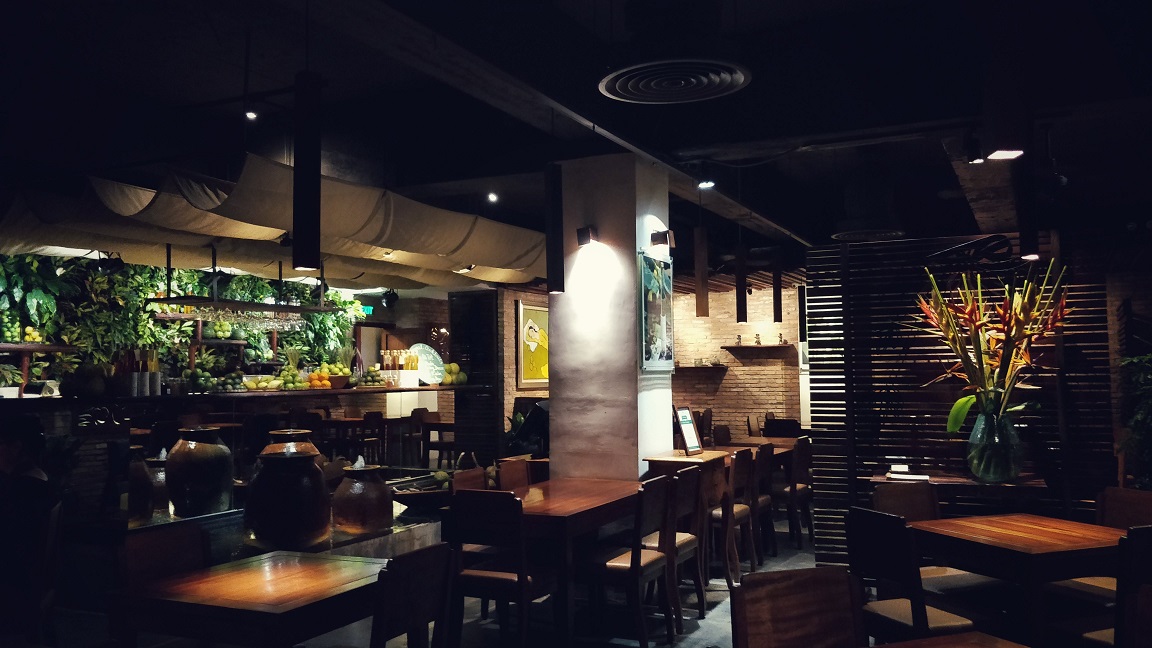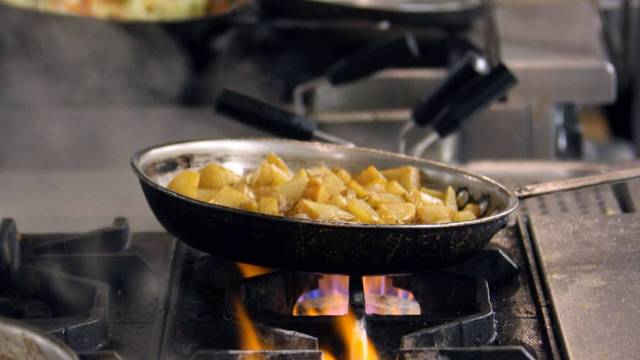Chinese Food Islamabad: Appreciate Authentic Chinese Food at its Best
Chinese Food Islamabad: Appreciate Authentic Chinese Food at its Best
Blog Article
Savor Genuine Asian Cuisine With a Pan-Asian Spin for a Culinary Experience
Getting started on a culinary trip through authentic Oriental food, improved with a Pan-Asian spin, supplies a special opportunity to explore the rich tapestry of flavors that specify the area's varied cooking customs. This experience welcomes you to savor the elegant balance of preferences-- wonderful, salty, spicy, and sour-- balanced by aromatic herbs and flavors. Envision the cutting-edge blend of Thai curry and ramen or the unanticipated joy of sushi burritos. As you contemplate these tempting recipes, take into consideration the social stories and historical impacts that shape them, each bite providing a story waiting to be found.

Discovering Pan-Asian Tastes
In the realm of international gastronomy, Pan-Asian cuisine stands apart for its remarkable variety and the harmonious interplay of flavors from different Asian societies. This cooking strategy celebrates the abundant customs and unique components located across the continent, creating a tapestry of preferences that is both fascinating and gratifying. Key to Pan-Asian cuisine is its capacity to balance different flavors-- pleasant, salty, spicy, and sour-- while highlighting the quality and quality of each active ingredient.
From the umami-rich soy sauce of Japan to the fiery chili peppers of Thailand, Pan-Asian food offers an extensive palette of flavors. These components are commonly incorporated in creative ways, improving recipes with layers of complexity. For example, the usage of fragrant herbs such as lemongrass and cilantro, usual in Vietnamese and Thai food, adds a revitalizing brightness to meals, while the incorporation of coconut milk supplies a creamy, rich structure.
The emphasis on fresh fruit and vegetables and aromatic spices makes sure that each dish is not only a feast for the preference buds yet also for the senses. Pan-Asian food welcomes diners to embark on a cooking journey, exploring the large and differed landscapes of Eastern gastronomy with every bite.
Fusion Dishes to Attempt
While Pan-Asian cuisine is celebrated for its standard flavors, the modern-day cooking landscape is progressively accepting combination meals that mix these traditional aspects with influences from various other regions. This cutting-edge strategy not just honors the rich heritage of Eastern culinary arts yet additionally introduces unique preference experiences that interest modern tastes buds.
An archetype of such a blend meal is the Korean-Mexican taco, where marinaded bulgogi beef is covered in a warm tortilla, covered with kimchi and a spicy gochujang-infused salsa. This mix marries the vibrant, mouthwatering tastes of Korea with the dynamic, fresh elements of Mexican food. Similarly, sushi burritos have actually acquired popularity, joining together the delicate virtuosity of Japanese sushi with the hearty, hand-held benefit of a burrito, frequently including fusion components like tempura shrimp and avocado with a drizzle of wasabi mayo.
Another notable meal is Thai curry ramen, which instills the velvety, aromatic spices of Thai curry right into the comforting broth of typical Japanese ramen, creating a harmonious mix that entices the senses. These blend dishes extend beyond mere novelty; they represent a cooking dialogue between cultures, urging expedition and development worldwide of Pan-Asian food.
Essential Active Ingredients and Seasonings
To really value Pan-Asian cuisine, one need to comprehend the necessary ingredients and spices that form its structure. This varied culinary style draws from a rich tapestry of Oriental customs, using an unified blend of tastes and structures.
Aromatic components are critical, with ginger, lemongrass, and garlic being common across various Pan-Asian recipes. These ingredients provide a great smelling base that improves the intricacy of flavors. Spices such as celebrity anise, cardamom, and cinnamon introduce warmth and personality, resembling influences from areas like China and India.

Food Preparation Methods and Tips
Mastering the art of Pan-Asian cuisine needs knowledge with its distinctive food preparation techniques, each adding to the vivid tapestry of flavors this culinary practice is celebrated for. Central to these techniques is the stir-fry, a quick food preparation method that preserves the nutritional stability and dazzling colors of ingredients. Making use of a frying pan, the stir-fry method enables even warm circulation, necessary for accomplishing the characteristic appearance and flavor equilibrium of Pan-Asian recipes.
Another essential method is steaming, specifically prevalent in Chinese cuisine. This gentle technique preserves the all-natural tastes and nutrients of active ingredients, making it optimal for fish and shellfish and veggies. Dumplings, a cherished staple, typically profit from steaming, leading to soft, delicious appearances.
Barbecuing, additionally integral, imparts great smoky midsts to recipes such as Korean bulgogi or Japanese yakitori (pan asian restaurant Islamabad). This technique often involves marinating ingredients, permitting tastes to permeate deeply before cooking over an open fire or warmer
Finally, mastering the art of balancing flavors-- pleasant, sour, salty, bitter, and umami-- is important. Correctly layering these aspects can boost a meal from regular to amazing, using a complex and satisfying culinary experience that personifies the essence of Pan-Asian food.
Eating Experiences Worldwide
Across the world, Pan-Asian food provides an unequaled dining experience, commemorated for its abundant tapestry of flavors and vivid discussions. This culinary phenomenon has gone beyond cultural borders, catching the hearts and tastes of food fanatics worldwide. In multicultural cities fresh York, London, and Sydney, Pan-Asian dining establishments act as melting pots where like it cooking customs from Thailand, Japan, China, and past assemble, giving restaurants with an eclectic mix of meals that highlight the area's diversity.
The international allure of Pan-Asian cuisine hinges on its ability to offer both credibility and development. Chefs masterfully marry conventional components such as lemongrass, soy sauce, and miso with modern techniques, resulting in recipes that are both refreshingly brand-new and acquainted. This combination permits diners to start a cooking journey that appreciates heritage while embracing modernity.
Moreover, dining experiences are boosted through attentively developed settings that show the principles of Pan-Asian aesthetic appeals. From minimal Japanese-inspired insides to vibrant Thai-themed areas, each restaurant supplies a special atmosphere that matches the cooking offerings. Because of this, customers are not just eating a dish yet partaking in a social experience, making Pan-Asian dining a genuinely global phenomenon.
Final Thought
The exploration of Pan-Asian cuisine offers a profound understanding of the complex interplay of flavors and cooking practices across Asia. By embracing fusion dishes such restaurants with outdoor seating near me as Thai curry ramen and sushi burritos, the cooking journey not only highlights the adaptability of traditional active ingredients yet additionally showcases innovative modern-day techniques. This gastronomic journey, enriched by essential flavors and cooking methods, gives a special possibility to appreciate the cultural variety and culinary virtuosity that define Pan-Asian food on a global range.
Beginning on a cooking trip through genuine Oriental cuisine, boosted with a Pan-Asian spin, offers an unique possibility to explore the rich tapestry of flavors that define the area's diverse cooking practices.In the realm of global gastronomy, Pan-Asian cuisine stands out for its exceptional diversity and the harmonious interaction of flavors from various Eastern cultures. Key to Pan-Asian cuisine is its capability to stabilize contrasting flavors-- wonderful, salty, spicy, and sour-- while highlighting the freshness and quality of each ingredient.

Report this page